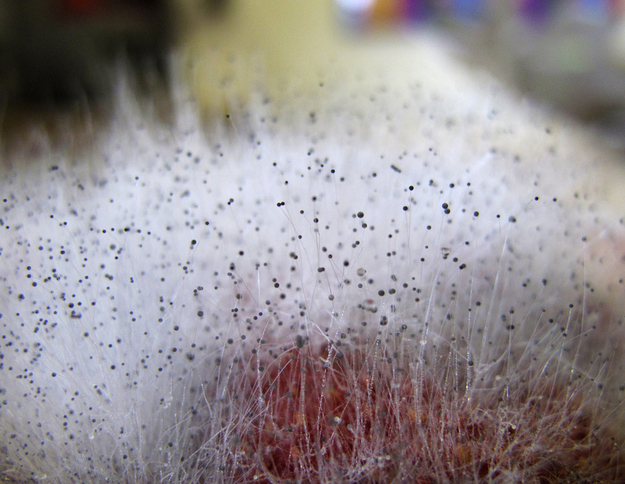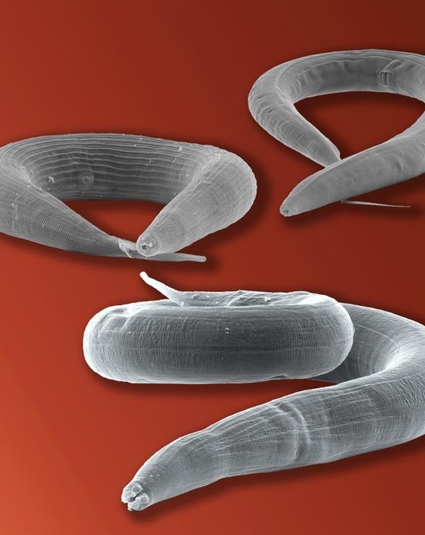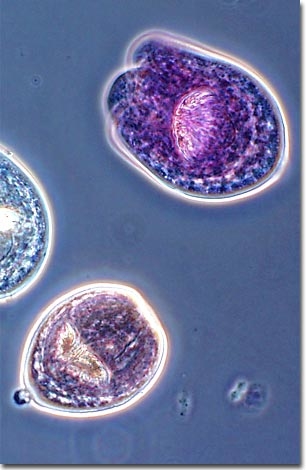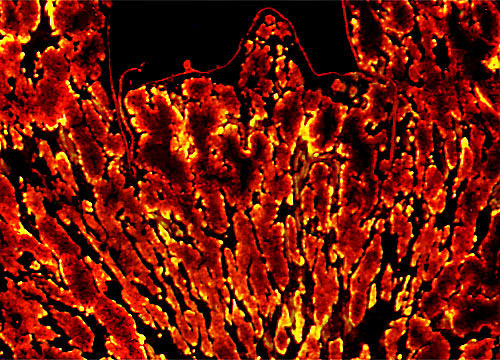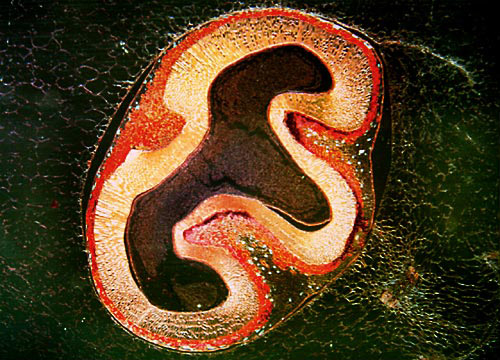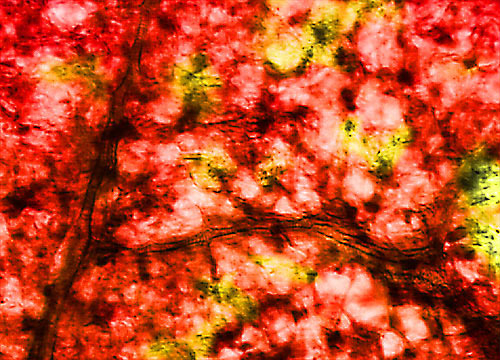Wheat Loose Smut
Inside a seedling, parasitic smut sends out fine, thread-like filaments called hyphae that feed upon host cells. The creeping filaments form networks that invade almost all plant tissue and form an integrated structure called mycelium. Smut reproduces by forming numerous thick-walled resting spores. Upon maturity, superficial spores erupt through the confines of thin plant membranes and appear as very fine, dust-like black powder. f The minute black spores travel to other plants upon air currents or are washed into the ground to mix with seed grain during heavy dews or rain.
Black Rot of Grape
This fungus reproduces with two types of spores: ascospores and conidia (pycniospores). Ascopores are produced in the grape mummy and forcibly discharged into the air, often traveling considerable distances. Conidia are vegetatively reproduced spores that the fungus uses to propagate, and they are spread through rain or irrigation water splashing on the plants.
Blue Mold Sporangiophores
Molds are members of the Fungi kingdom, and are therefore neither plant nor animal. While many species of mold possess physical features strongly reminiscent of plants, such as stalk-like growths and plant-like cell walls, these resemblances are merely superficial. For example, the cell walls of plants are composed of cellulose, whereas a mold's cell wall is made of chitin. Furthermore, molds have no chlorophyll and are unable to produce their own food by means of photosynthesis. Rather, molds are heterotrophs and must obtain nutrients by consuming organic materials, a process achieved by secreting digestive enzymes that break down food materials into absorbable form.
